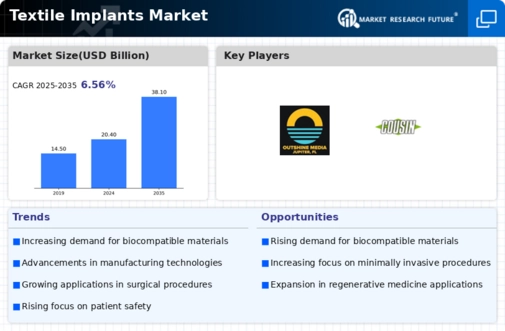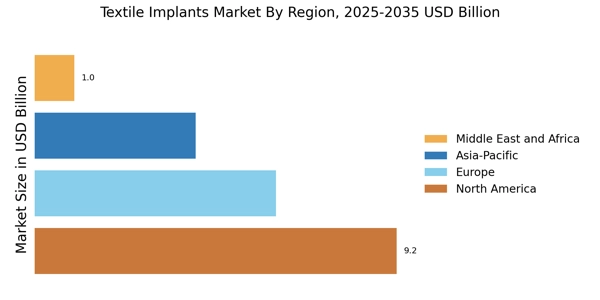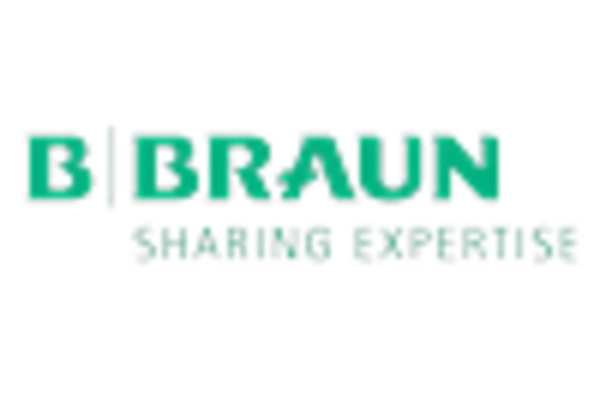Advancements in Textile Engineering
Innovations in textile engineering are significantly influencing the Textile Implants Market. The development of advanced textile technologies, such as 3D weaving and smart textiles, is enabling the creation of implants that are not only functional but also tailored to specific medical applications. These advancements allow for the production of lightweight, durable, and flexible implants that can better integrate with the human body. Furthermore, the introduction of multifunctional textiles that can deliver drugs or monitor physiological parameters is expected to enhance the therapeutic potential of textile implants. As a result, the market is likely to witness a surge in demand for these engineered textiles, which could lead to a market growth rate of around 10% in the coming years.
Surge in Sports and Fitness Activities
The growing interest in sports and fitness activities is contributing to the expansion of the Textile Implants Market. As more individuals engage in high-impact sports, the incidence of sports-related injuries is rising, leading to a higher demand for implants that can aid in recovery and rehabilitation. Textile implants, particularly those designed for orthopedic applications, are becoming increasingly popular among athletes and active individuals. This trend is expected to drive market growth, with projections indicating a potential increase of around 6% in the sports medicine segment of the textile implants market. The focus on performance enhancement and injury prevention further emphasizes the relevance of textile implants in this context.
Increasing Prevalence of Chronic Diseases
The rising prevalence of chronic diseases is a critical driver for the Textile Implants Market. Conditions such as cardiovascular diseases, diabetes, and orthopedic disorders necessitate the use of various implants for effective management and treatment. As the global population ages and lifestyle-related health issues become more common, the demand for textile implants is expected to escalate. Market analysis suggests that the textile implants segment related to orthopedic applications alone could see a growth rate of approximately 7% annually. This increasing need for effective treatment options underscores the importance of textile implants in modern healthcare, thereby propelling the market forward.
Rising Demand for Biocompatible Materials
The Textile Implants Market is experiencing a notable increase in demand for biocompatible materials. This trend is driven by the growing awareness of the benefits associated with using materials that are compatible with human tissue. As healthcare providers and patients alike prioritize safety and efficacy, the preference for biocompatible textiles is likely to rise. Reports indicate that the market for biocompatible materials is projected to grow at a compound annual growth rate of approximately 8% over the next five years. This shift towards biocompatibility not only enhances patient outcomes but also aligns with the broader objectives of the Textile Implants Market to innovate and improve product offerings.
Regulatory Support for Innovative Medical Solutions
Regulatory bodies are increasingly supporting the development of innovative medical solutions, which is positively impacting the Textile Implants Market. Streamlined approval processes and incentives for research and development are encouraging companies to invest in new textile implant technologies. This regulatory environment fosters innovation, allowing for the introduction of advanced textile implants that meet stringent safety and efficacy standards. As a result, the market is likely to benefit from a wave of new products that can address unmet medical needs. The anticipated growth in the market could reach approximately 9% over the next few years, driven by these favorable regulatory conditions.

















Leave a Comment